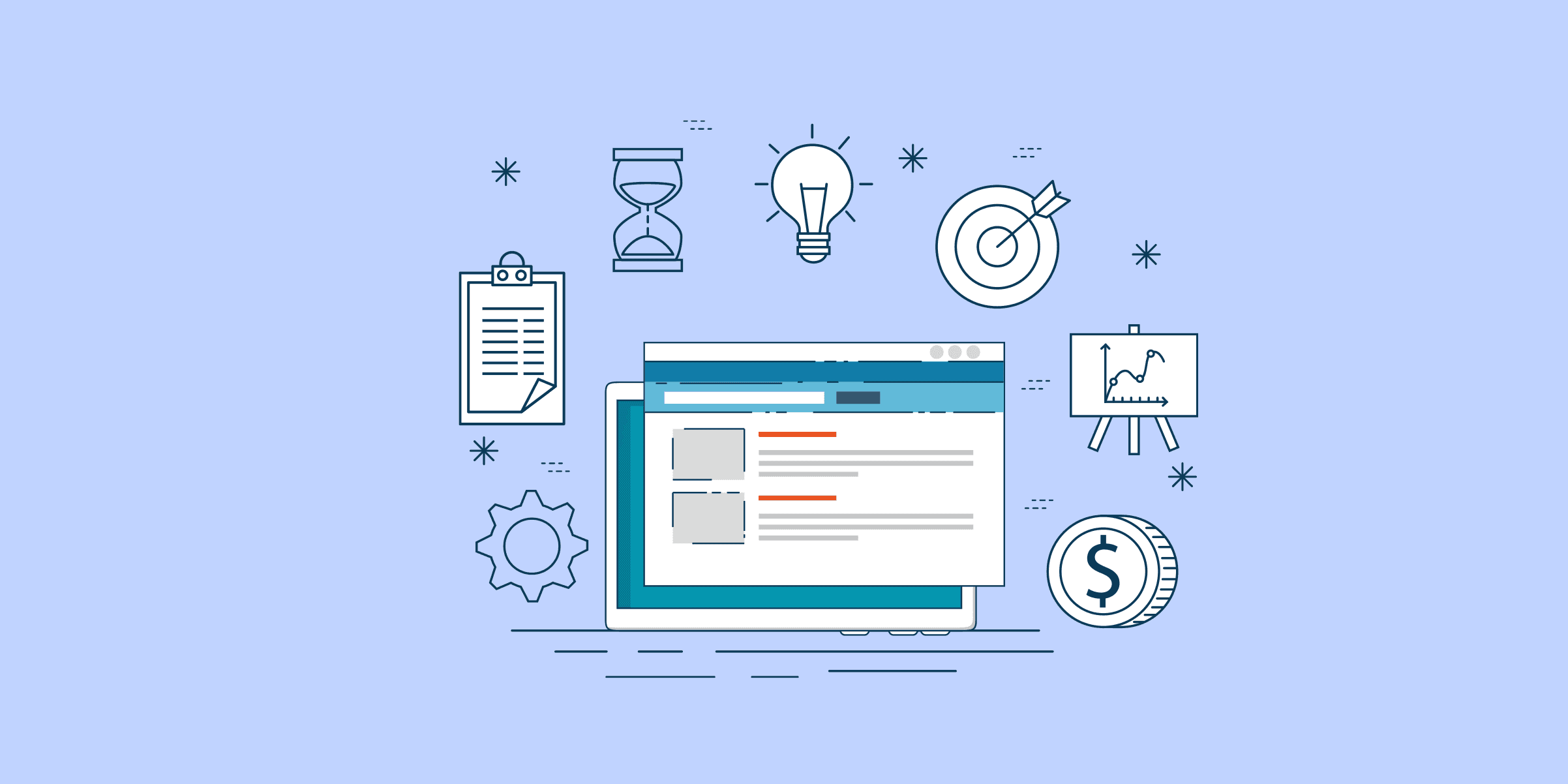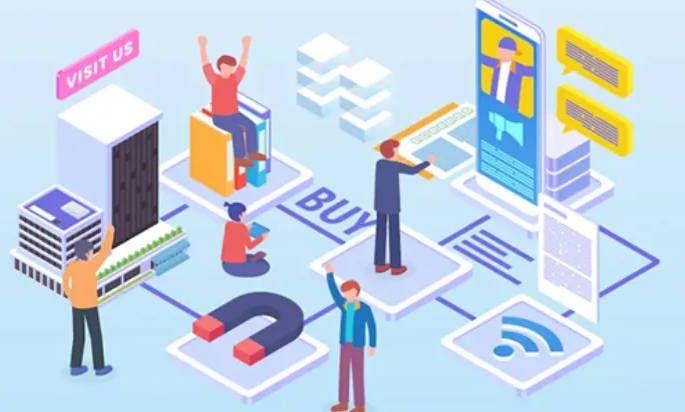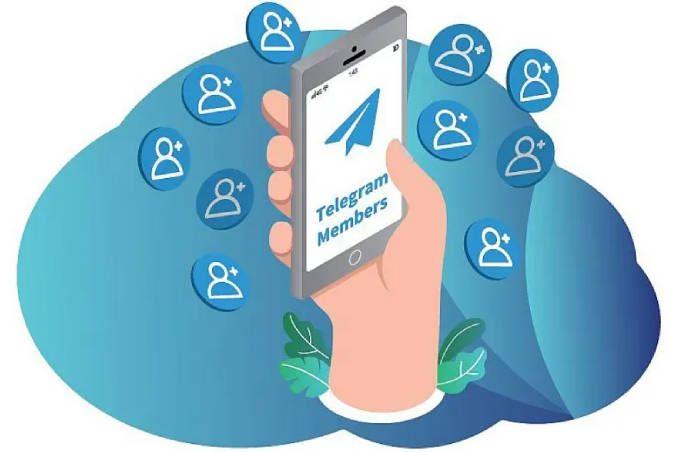What is Demand forecasting?

LIKE.TG 成立于2020年,总部位于马来西亚,是首家汇集全球互联网产品,提供一站式软件产品解决方案的综合性品牌。唯一官方网站:www.like.tg
Demand forecasting, a major aspect of business strategy, is pivotal in anticipating future demand for products and services. By leveraging demand forecasting techniques, businesses gain the ability to make informed decisions regarding production, inventory management, and marketing strategies. This blog looks into the intricacies of demand forecasting, exploring its significance, challenges, and various methodologies employed to predict market trends accurately. We’ll also provide practical examples and industry insights to illustrate how businesses can harness the power of demand forecasting to gain a competitive edge within the evolving marketplace.
Demand forecasting overview
In the ever-changing business landscape, accurately predicting future demand for products and services is paramount to success. This is where demand forecasting comes into play. Demand forecasting is the art and science of predicting the future demand for a particular product or service. By leveraging historical data, market trends, and various analytical techniques, businesses can gain valuable insights into consumer behaviour and market dynamics, enabling them to make better choices regarding production, inventory management, and marketing strategies.
The significance of demand forecasting cannot be overstated. It empowers businesses to enhance their operations, minimise production costs, and ensure customer satisfaction by meeting demand effectively. Accurate demand forecasting also assists businesses in identifying potential market opportunities, plan for seasonal fluctuations, and respond swiftly to consumer preferences changes.
Numerous demand forecasting methods and techniques are available, each with strengths and limitations. Some of the commonly used short-term demand forecasting methods include:
– Quantitative methods: These methods rely on historical data and statistical analysis to predict future demand. Examples include time series analysis, regression analysis, and econometric models.
– Qualitative methods: These methods incorporate subjective judgments and market research to estimate future demand. Techniques such as surveys, expert opinions, and focus groups fall under this category.
– Causal methods: These methods establish a cause-and-effect relationship between demand and various factors such as economic indicators, consumer behaviour, and market trends.
The choice of demand forecasting method depends on several factors, including the nature of the product or service, the availability of historical data, and the level of accuracy required. It is often beneficial to employ a combination of methods to enhance the reliability of forecasts.
Demand forecasting is a continuous process that requires regular monitoring and updating. As new data becomes available, forecasts should be revised to reflect changing market conditions. By staying attuned to market dynamics and leveraging robust demand forecasting techniques, businesses can gain a competitive edge and navigate the uncertainties of the marketplace with greater confidence.
Demand Forecasting explained
Demand forecasting is an imperative component within the business strategy domain, enabling organisations to peer into the future and anticipate the ebb and flow of market demand. This intricate process of predicting consumer behaviour holds the key to optimising production, managing inventory precisely, and crafting marketing strategies that hit the bullseye.
At the heart of demand forecasting lies the meticulous analysis of historical data, discerning patterns and trends illuminating the demand trajectory. Techniques such as moving averages and exponential smoothing transform this data into invaluable insights, guiding businesses toward the correct conclusions.
Another avenue for demand forecasting involves venturing into the field of market research, where surveys, focus groups, and customer conversations unveil consumers’ hidden desires and preferences. This qualitative approach paints a vivid picture of market dynamics, allowing businesses to tailor their strategies accordingly.
When historical data falls short or market shifts disrupt the landscape, businesses turn to the expertise of industry veterans – sales representatives, market analysts, and specialists with a wealth of knowledge. Their informed judgement acts as a compass, navigating the uncertainties and charting a course toward accurate demand forecasts.
Econometric models, wielding the power of statistics and mathematical finesse, establish intricate connections between demand and economic factors like GDP, inflation, and consumer spending. These sophisticated tools, however, demand specialised knowledge and careful thought regarding complex economic relationships.
Machine learning algorithms and artificial intelligence emerge as game-changers at the cutting edge of demand forecasting. Their ability to process vast data volumes and discern intricate patterns unlocks a new level of precision. These methods capture the nuances of non-linear relationships and integrate a diverse array of variables, yielding forecasts that resonate with market realities.
The choice of demand forecasting method hinges on a delicate balance of factors: the nature of the product or service, the availability of historical data, the degree of market uncertainty, and the resources at hand. Often, a prudent approach involves blending multiple methods, and harnessing their collective strengths to enhance forecast accuracy.
Regular updates to demand forecasts are paramount in a world of constant flux. Market conditions, economic trends, and consumer whims can shift lightning, demanding businesses to stay nimble and responsive. By continuously monitoring actual demand and incorporating fresh data, organisations can refine their forecasts, ensuring their decisions remain grounded in reality.
Demand forecasting, an art as much as a science, lies at the heart of business success. It empowers organisations to hone their operations, minimise costs, and adapt seamlessly to the ever-changing market landscape. Embracing this practice enables businesses to navigate the complexities of consumer demand, securing their competitive edge and propelling them toward sustained growth.
Benefits of demand forecasting
Businesses that accurately forecast demand gain a competitive edge by optimising inventory levels, improving customer satisfaction, planning for future production and staffing needs, identifying and mitigating risks in the supply chain, and supporting data-driven decision-making and strategic planning.
Optimising inventory levels:
Accurate demand forecasting and inventory planning help businesses maintain optimal inventory levels, avoiding stockouts that can lead to lost sales and customer dissatisfaction, as well as excess inventory that ties up capital and incurs storage costs. By aligning inventory levels with anticipated demand, businesses can minimise costs and maximise profitability.
Improving customer satisfaction:
To attain customer satisfaction, you must first meet customer demand. When businesses accurately forecast demand, they can ensure adequate inventory to promptly fulfil customer orders. This reduces the likelihood of stockouts, backorders, and delayed deliveries, all of which can lead to customer frustration and churn. By consistently meeting customer demand, businesses build customer trust and loyalty.
Planning for future production and staffing needs:
Demand forecasting enables businesses to plan for future production and staffing needs. By anticipating demand trends, businesses can adjust their production schedules and workforce levels accordingly. This helps them avoid production bottlenecks, capacity constraints, and labour shortages, ensuring smooth operations and efficient resource allocation.
Identifying and mitigating risks in the supply chain:
Demand forecasting helps businesses identify potential risks in the supply chain, such as disruptions due to natural disasters, geopolitical events, or supplier issues. By anticipating these risks, businesses can develop contingency plans and mitigation strategies to minimise their impact on operations and customer service.
Supporting data-driven decision-making and strategic planning:
Accurate demand forecasting provides valuable insights that inform the organisation’s data-driven decision-making and strategic planning. It helps businesses allocate resources effectively, set realistic sales targets, optimise marketing campaigns, and make informed product development and expansion investments. By leveraging demand forecasting, businesses can make proactive decisions that align with market dynamics and customer needs, driving long-term growth and success.
Challenges of demand forecasting
Businesses face numerous challenges when forecasting demand, which can impact the accuracy and effectiveness of their predictions. One significant challenge lies in data accuracy and availability. Businesses rely on various data sources, such as historical sales data, market research, and economic indicators, to forecast demand. However, the accuracy and reliability of these data sources can vary, leading to potential errors in the forecasting process. Some businesses may also need more historical data, especially for new products or services, making it difficult to establish reliable demand patterns.
Another challenge in demand forecasting is the influence of external factors beyond a business’s control. Economic conditions, changes in consumer preferences, technological advancements, and global events can significantly impact internal demand forecasting. For instance, a sudden economic downturn can lead to decreased demand for non-essential products, while a new technological innovation may disrupt existing markets and create unexpected demand. Businesses must continuously monitor and analyse these external factors to adjust their demand forecasts accordingly.
Long lead times, particularly in industries with complex supply chains, pose another challenge in demand forecasting. Certain products may require extended production or shipping times, making it difficult to predict demand over longer horizons accurately. This challenge is compounded by the risk of stockouts or overstocking, which can negatively affect customer satisfaction and profitability.
Product seasonality also presents forecasting difficulties. Demand for specific products or services may fluctuate significantly based on seasonal factors, such as weather, holidays, or fashion trends. Accurately predicting these seasonal variations is vital to avoid stockouts during peak demand periods and excess inventory during off-seasons.
Lastly, rapidly changing consumer preferences can disrupt even the most carefully crafted demand forecasts. Factors such as evolving tastes, social media, consumer trends, and consumer behaviour shifts can quickly alter market dynamics. Businesses must stay agile and responsive to these changes by continuously gathering and analysing consumer insights to adapt their demand forecasts.
Addressing these challenges requires businesses to adopt robust demand forecasting methodologies, leverage advanced analytics tools, and maintain a data-driven approach. By overcoming these obstacles, businesses can improve the accuracy of their demand forecasts, increase their operations, and gain a competitive advantage in the market.
Why Is Demand Forecasting Important for Businesses?
Demand forecasting is a crucial business process that enables companies to anticipate future demand for their products or services. By accurately predicting demand, businesses can maximise their operations and make informed decisions that drive growth and profitability. Demand forecasting is a necessity when it comes to several key areas:
Supply Chain Management: Accurate demand forecasting allows businesses to maintain optimal inventory levels, reducing the risk of stockouts and overstocking. This optimisation of inventory levels directly impacts cash flow, customer satisfaction, and overall supply chain efficiency.
Production Planning: With precise demand forecasts, businesses can effectively plan their production schedules to meet anticipated demand. This ensures that they have the right resources, materials, and workforce in place to fulfil customer orders efficiently. Proper planning minimises production disruptions, reduces costs, and enhances operational efficiency.
Marketing and Sales Strategies: Demand forecasting provides valuable insights into market trends and customer preferences. This information empowers businesses to develop targeted marketing and sales strategies that resonate with their customers. By aligning marketing efforts with forecasted demand, businesses can make the most of their marketing budgets and maximise their return on investment.
Financial Planning and Budgeting: Accurate demand forecasting enables businesses to make informed financial decisions. By anticipating future demand and revenue, businesses can create realistic budgets, allocate resources effectively, and plan for future investments. This financial planning ensures the long-term sustainability and growth of the business.
Risk Management: Demand forecasting helps businesses identify potential risks and challenges in the market. By anticipating fluctuations in demand, businesses can develop contingency plans to mitigate these risks and minimise their impact on operations. This proactive approach enhances business resilience and allows companies to respond swiftly to changing market conditions.
Overall, demand forecasting is an essential tool that empowers businesses to make data-driven decisions, increase their operations, and gain a competitive edge in the market. By accurately predicting future demand, businesses can achieve improved customer satisfaction, increased profitability, and sustainable growth.
What Factors Impact Demand Forecasting?
This section discusses the various factors that can impact demand forecasting. These factors include economic conditions, seasonality, weather, competitors’ actions, and changes in consumer preferences.
Economic conditions play a significant role in demand forecasting. A strong economy typically increases demand for goods and services, while a weak economy can lead to decreased demand. Factors such as GDP growth, inflation, interest rates, and consumer confidence affect economic conditions and demand forecasting.
Seasonality is another essential factor to consider in demand forecasting. Many products and services experience predictable fluctuations in demand throughout the year. For example, demand for ice cream is typically higher in the summer months, while demand for winter coats is higher in the winter months. Businesses need to take seasonality into account when forecasting demand to ensure that they have adequate inventory to meet customer needs.
Weather can also impact demand forecasting. For example, a cold and snowy winter can increase demand for heating oil and snow removal services, while a hot and dry summer can increase demand for air conditioners and swimming pools. Businesses located in areas with volatile weather patterns need to adjust their demand forecasts quickly in response to changing weather conditions.
Competitors’ actions can also affect demand forecasting. For example, if a competitor launches a new product or service similar to yours, it can decrease demand for your product or service. Businesses need to keep a close eye on their competitors’ activities and be prepared to adjust their demand forecasts accordingly.
Finally, changes in consumer preferences can also impact demand forecasting. For example, becoming more health-conscious can lead to decreased passive demand forecasting for sugary snacks and increased demand for healthy foods. Businesses need to be aware of changing consumer preferences and be able to adjust their demand forecasts accordingly.
By considering all of these factors, businesses can improve the accuracy of their demand forecasts and make better-informed decisions about production, inventory, and marketing.
7 Demand Forecasting Types
When it comes to demand forecasting, there exists a diverse array of methodologies, each tailored to specific business scenarios and product characteristics. Let’s take a deeper look into seven prominent demand forecasting types, exploring their distinctive features, strengths, and limitations:
1. Historical Data Analysis: This method leverages historical sales data to project future demand. It’s straightforward to implement, making it a popular choice for businesses with ample historical information. However, its accuracy is limited by the assumption that past trends will continue into the future, which may only sometimes hold true.
2. Expert Opinion: This method involves soliciting insights from industry experts, sales personnel, or customers to estimate future demand for a product. It’s beneficial when historical data is scarce, or the product is new to the market. However, the accuracy of this method hinges on the expertise and objectivity of the individuals providing the estimates.
3. Market Research: Conducting market research surveys, focus groups, or analysing consumer behaviour can provide valuable insights into future demand. This method is well-suited for new product launches or understanding evolving customer preferences. However, it can be time-consuming and may not accurately capture purchasing behaviour accurately.
4. Econometric Models: These models incorporate economic indicators, such as GDP growth, inflation, and consumer spending, to forecast demand. They are advantageous when there’s a strong correlation between economic factors and product demand. However, econometric models require robust data and expertise in economic analysis, which may only be readily available to some businesses.
5. Time Series Analysis: This method analyses historical demand data to identify patterns and trends. It’s effective for products with relatively stable demand patterns. However, it needs help to capture sudden shifts in demand caused by unforeseen events or market disruptions.
6. Causal Models: Establish cause-and-effect relationships between various factors and demand. They are helpful when there’s a clear understanding of demand drivers, such as advertising, promotions, or pricing. However, building causal models can be complex and requires substantial data and expertise.
7. Machine Learning Algorithms: These algorithms leverage historical data and advanced statistical techniques to predict demand. They excel in handling large datasets and identifying intricate patterns. However, machine learning models require specialised expertise and can be challenging to interpret, making it difficult to understand the underlying reasons behind the forecasts.
Each of these demand forecasting methods has its merits and drawbacks. The choice of method depends on factors such as data availability, product characteristics, market dynamics, and the level of accuracy required. Businesses should carefully evaluate these factors and select the most appropriate method to ensure reliable and actionable demand forecasts.
How to Forecast Demand
To forecast demand, businesses can leverage historical sales data and market research to gain insights into past demand patterns and market trends. This data can be analysed using statistical techniques and econometric models to identify factors influencing demand, such as seasonality, economic conditions, and consumer preferences. Businesses can also employ machine learning and artificial intelligence algorithms to analyse large volumes of data and identify complex relationships between variables that may impact demand.
Qualitative factors such as consumer behaviour, economic conditions, and competitive activity should be considered when forecasting demand. Consumer surveys, focus groups, and market research can provide valuable insights into consumer preferences and buying patterns. Economic indicators such as GDP growth, inflation, and unemployment rates can also impact demand, while understanding the strategies and actions of competitors can help businesses anticipate changes in market share.
Regularly updating and refining forecasts is crucial due to the evolving nature of markets. New information and changing market conditions can quickly render forecasts obsolete. Businesses should establish a process for continuously monitoring demand-related data and incorporate new information into their forecasts as soon as it becomes available. This agility allows businesses to adapt their strategies and make informed decisions in response to evolving market conditions.
Businesses can develop robust demand forecasts that support effective decision-making by combining historical data analysis, market research, qualitative insights, and machine learning techniques. Accurate demand forecasting enables businesses to advance production schedules, manage inventory levels, plan marketing campaigns, and allocate resources efficiently, ultimately driving growth and profitability.
Demand Forecasting Methods
Demand forecasting is critical to business planning, enabling companies to make informed decisions about production, inventory, marketing, and financial strategies. Businesses can utilise various demand forecasting methods to predict future demand for their products or services. Here are some commonly used demand forecasting methods:
Time Series Analysis: This method analyses historical demand data to identify patterns and trends. It assumes that future demand will follow similar patterns as observed. Time series analysis includes techniques such as moving averages, exponential smoothing, and seasonal decomposition of time series.
Causal Analysis: This method identifies and analyses the causal factors influencing demand. It involves studying the relationship between demand and factors such as economic conditions, market trends, consumer behaviour, and competitive activity. Causal analysis helps businesses understand the underlying drivers of demand and make more accurate forecasts.
Judgmental Forecasting: This method involves using the knowledge and expertise of experienced professionals to make demand forecasts. It is often used when historical data is limited or when qualitative factors play a significant role in demand. Judgmental qualitative demand forecasting techniques include expert opinion, the Delphi method, and market research.
Machine Learning: Machine learning algorithms can be used to analyse large volumes of data and identify complex patterns that may not be evident through traditional quantitative demand forecasting and methods. Machine learning techniques such as regression analysis, decision trees, and neural networks can be applied to demand forecasting.
Econometric Models: These models use statistical and economic theories to forecast demand. They incorporate economic variables such as income, prices, interest rates, and consumer sentiment to predict future demand. Econometric models are often used for short-term demand and long-term demand forecasting.
The choice of demand forecasting method depends on several factors, including the availability of historical data, the nature of the product or service, the forecast horizon, and the level of accuracy required. By selecting the appropriate demand forecasting method and regularly updating forecasts based on new data, businesses can improve their decision-making and achieve better operational efficiency and profitability.
Demand Forecasting Examples
Demand forecasting is a valuable tool for businesses of all sizes and industries. Here are a few examples of how demand forecasting can be used in practice:
Retail: A clothing retailer might use demand forecasting to predict how many units of a new product to produce for the upcoming season. By considering factors such as historical sales data, current fashion trends, and economic conditions, the retailer can decide how much inventory to carry to meet customer demand.
Manufacturing: A industrial equipment manufacturer might use demand forecasting to predict how many units of a particular product to produce each month. By considering factors such as customer orders, production capacity, and lead times, the manufacturer can ensure that it has enough inventory to meet customer demand without overproducing.
Transportation: A logistics company might use demand and forecasting models to predict how much freight it will need to transport each week. By considering factors such as shipping volumes, economic conditions, and weather patterns, the logistics company can ensure that it has enough resources to meet customer demand.
Healthcare: A hospital might use demand forecasting to predict how many patients it will need to accommodate daily. By considering factors such as historical patient data, current patient trends, and the availability of medical staff, the hospital can ensure that it has enough resources to meet patient demand.
Technology: A software company might use demand forecasting to predict how many licences of a new software product to sell each month. By considering factors such as market research, competitor analysis, and pricing strategy, the software company can ensure that it has enough licenses to meet customer demand without overproducing.
Demand Forecasting Trends
Demand forecasting has significantly transformed in recent years, driven by technological advancements and changing business dynamics. The emergence of real-time data and machine learning has revolutionised the field, enabling businesses to make more accurate and timely predictions. Real-time data provides businesses with up-to-the-minute information on market conditions, consumer behaviour, and supply chain dynamics, allowing them to respond quickly to changes in demand. Machine learning algorithms analyse vast amounts of data to identify patterns and trends, enabling businesses to make more accurate forecasts and optimise their operations.
Collaborative planning is another critical trend in demand forecasting. This approach involves bringing together stakeholders across the organisation, including sales, marketing, production, and finance, to develop demand forecasts collectively. Collaborative demand planning also fosters a shared understanding of market dynamics and ensures forecasts align with the business strategy. By combining the knowledge and expertise of various teams, businesses can improve the accuracy and reliability of their demand forecasts.
The rise of artificial intelligence (AI) and advanced analytics further enhances demand forecasting capabilities. AI-powered tools can analyse vast amounts of data, identify complex patterns, and make predictions with a high degree of accuracy. Advanced analytics techniques, such as predictive modelling and simulation, enable businesses to test different scenarios and make informed decisions about their production and inventory levels. By leveraging AI and advanced analytics, businesses can gain a competitive edge by optimising their supply chains and meeting customer demand more effectively.
In summary, the evolution of demand forecasting is characterised by integrating real-time data, machine learning, collaborative planning, and AI-powered analytics. These trends are revolutionising how businesses predict demand, enabling them to make more accurate and data-driven decisions. By embracing these trends, businesses can gain a competitive advantage, progress their operations, and meet the ever-changing needs of their customers.
How to Choose Demand Forecasting Software
Choosing the right demand forecasting software is essential for businesses developing their operations and making informed decisions. With a wide range of demand forecasting software options available, it’s essential to consider several key factors to select the best tool for your organisation.
1. Assess Your Business Needs:
Before selecting software, thoroughly assess your business’s unique needs and requirements. Consider the size and complexity of your organisation, the industry you operate in, and the specific forecasting challenges you face. Determine the level of accuracy and granularity required for your forecasts and the types of data you need to analyse.
2. Evaluate Software Features and Functionality:
Evaluate the features and functionality offered by different demand forecasting software options. Look for software that provides the necessary capabilities, such as historical data analysis, trend identification, seasonal adjustment, and scenario modelling. Consider the user interface, ease of use, and the level of customisation available to meet your specific requirements.
3. Scalability and Integration:
Choose software that can scale to meet your growing business needs. Consider whether the software can handle increasing data volumes and complexity as your business expands. Assess the software’s ability to integrate with your existing systems, including enterprise resource planning (ERP) and customer relationship management (CRM) systems, to ensure seamless data flow and analysis.
4. Cost and Return on Investment:
Compare the costs associated with different software options, including licensing fees, implementation costs, and ongoing maintenance and support. Evaluate the potential return on investment (ROI) by considering the benefits the software can bring in terms of improved forecast accuracy, reduced inventory costs, optimised production planning, and enhanced customer service.
5. Customer Support and Training:
Consider the level of customer support and training provided by the software vendors. Ensure that the vendor offers responsive and reliable support to address any issues or queries you may have. Assess the availability of training resources, such as user manuals, tutorials, and workshops, to help your team effectively use the software.
6. Data Security and Compliance:
Evaluate the software’s security measures to protect your sensitive business data. Ensure that the software complies with relevant industry regulations and standards. Consider the data encryption methods, access controls, and disaster recovery plans offered by the software vendor.
By carefully considering these factors, you can select the demand forecasting software that best aligns with your business goals and requirements, enabling you to make data-driven decisions and gain a competitive edge in your industry.
Make Demand Forecasting Easier with LIKE.TG
Demand forecasting is an essential business process, but getting accurate results can take time and effort. LIKE.TG makes demand forecasting easier with AI-powered tools that help you get accurate results in minutes, collaborate with your team on forecasts, and adjust your forecasts as new data comes in. You’ll also get real-time insights into your demand forecast so you can make informed decisions.
LIKE.TG’s demand forecasting tools use a variety of data sources to create accurate forecasts, including historical sales data, current market conditions, and even future sales trends. This data is then analysed using machine learning algorithms to identify patterns and relationships that can be used to predict future demand.
LIKE.TG’s demand forecasting tools are easy to use and can be customised to meet the specific needs of your business. You can create forecasts for individual products or services or entire product lines. You can also create forecasts for different periods, such as days, weeks, or months.
Once you’ve created a forecast, you can share it with your team and collaborate on it. You can also track the accuracy of your forecasts over time and make adjustments as needed.
LIKE.TG’s demand forecasting tools are valuable for businesses of all sizes. They can help you improve your planning and decision-making, ultimately increasing your profitability.
Here are some of the benefits of using LIKE.TG’s demand forecasting tools:
- Get accurate results in minutes: LIKE.TG’s demand forecasting tools use AI-powered algorithms to analyse data and create accurate forecasts quickly and easily.
- Collaborate with your team: You can share your forecasts with your team and collaborate on them. This makes getting everyone on the same page and making better choices easy.
- Adjust your forecasts as new data comes in: LIKE.TG’s demand forecasting tools allow you to adjust your forecasts as new data becomes available. This ensures that your forecasts are always up-to-date and accurate.
- Get real-time insights into your demand forecast: LIKE.TG’s demand forecasting tools provide real-time insights into your demand forecast. This information can help you make better choices regarding your business.

LIKE.TG 专注全球社交流量推广,致力于为全球出海企业提供有关的私域营销获客、国际电商、全球客服、金融支持等最新资讯和实用工具。免费领取【WhatsApp、LINE、Telegram、Twitter、ZALO】等云控系统试用;点击【联系客服】 ,或关注【LIKE.TG出海指南频道】、【LIKE.TG生态链-全球资源互联社区】了解更多最新资讯
本文由LIKE.TG编辑部转载自互联网并编辑,如有侵权影响,请联系官方客服,将为您妥善处理。
This article is republished from public internet and edited by the LIKE.TG editorial department. If there is any infringement, please contact our official customer service for proper handling.


















